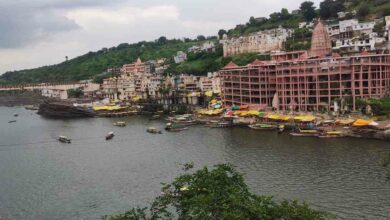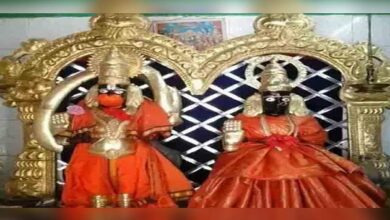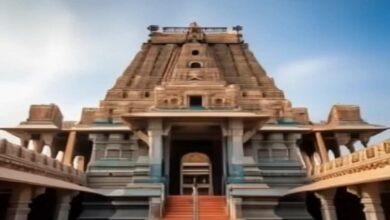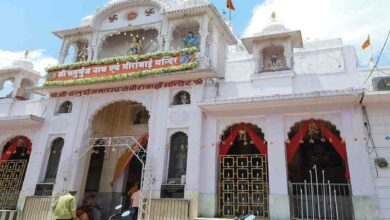Baidyanath Jyotirlinga: Devotees are eager to visit this famous Jyotirlinga of Jharkhand, know the history and importance of the temple
Baidyanath Jyotirlinga: India, a country renowned for its spirituality and rich history, is home to several old temples that serve as the focal point of devotion for its followers. The Baidyanath Temple in Deoghar, Jharkhand, is one of these temples. Baba Baidyanath, the local name for Lord Shiva, is the object of devotion in this temple. As one of India’s twelve Jyotirlingas, Baidyanath Temple has great religious significance for Hindus.
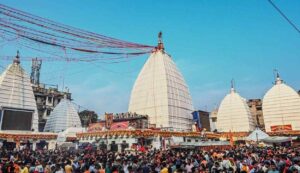
This temple is renowned for both its serene ambiance and its magnificent architecture. Millions of pilgrims worship Lord Shiva here each year. Today’s unique post will educate you about Baidyanath Mahadev, the significance of Baidyanath Temple, What makes Baidyanath Temple unique? In Hindi, Baidyanath The location of Baidyanath Temple These include Baidyanath’s history, Baidyanath’s history in Hindi, Baidyanath’s tale, Baidyanath Temple’s history, Baidyanath Temple’s time, and more. For that reason, be sure to read our essay through to the conclusion.
Vaidyanath Mahadev
In the state of Jharkhand, the city of Deoghar is home to the Baba Baidyanath Temple. Other names for the Baidyanath Temple include Vaidyanath Jyotirlinga and Baijnath Dham. One of India’s Jyotirlingas, the Baidyanath Temple is regarded as Lord Shiva’s most revered residence.
The Jyotirlinga is housed in the main Baba Baidyanath Temple, but there are twenty-one more outstanding temples in the Deoghar region of the state of Jharkhand that make up the enormous and spectacular temple complex. Millions of devotees go to the Baba Baidyanath Dham Temple during the yearly Shravan Mela.
Value of Baidyanath Temple
In addition to being a place of worship, the Baba Baidyanath Temple is a centre of culture. During the holy month of Shravan, the temple draws millions of worshippers, particularly on the auspicious day of Shivratri. Devotees travel the Kanwar Yatra with holy water from the Ganges to gift to Lord Shiva during the annual Shravani Mela, a significant pilgrimage.
The many ceremonies, festivals, and festivities that the temple hosts all year round further demonstrate its cultural importance. People’s strong spiritual connection with Baba Baidyanath is reflected in the lively atmosphere during these celebrations.
What makes Baidyanath Temple Unique?
In addition to being a place of worship, the Baba Baidyanath Temple is a centre of culture. During the holy month of Shravan, the temple draws millions of worshippers, particularly on the auspicious day of Shivaratri. Devotees travel the Kanwar Yatra with holy water from the Ganges to gift to Lord Shiva during the annual Shravani Mela, a significant pilgrimage. The many ceremonies, festivals, and festivities that the temple hosts all year round further demonstrate its cultural importance. People’s strong spiritual connection with Baba Baidyanath is reflected in the lively atmosphere during these celebrations.
An important pilgrimage site for Hindus
For Hindus, Baidyanath Temple is a significant place of pilgrimage. This temple receives lakhs of visitors each year. During the month of Sawan, thousands of Kanwariyas gather here to participate in the Kanwar Yatra, when they donate Ganga water to the shrine. The Jyotirlinga is a silver-covered structure situated below ground level. The temple complex also has a number of additional temples, such as Ganesh Temple, Hanuman Temple, and Nandi Temple.
The Baidyanath Temple’s location
The Baidyanath Temple is situated in the Indian state of Jharkhand’s Deoghar district. One of the twelve Jyotirlingas, this shrine is devoted to Lord Shiva. Situated in the heart of the city, this temple is encircled by tall walls on all sides. Jyotirlinga is housed in the temple’s sanctum sanctorum, which is under the ground level. The Jyotirlinga has a silver covering.
Baidyanath’s Past
Over a thousand years have passed since the Baba Baidyanath Temple’s founding. The temple was first built in the eighth century by Puran Mal, a descendant of the Nagavanshi dynasty, according to historical documents. The present temple is said to have been constructed by Raja Man Singh in the 16th century, despite several additions and modifications throughout the ages.
The expansive temple complex is distinguished by its enormous shikharas, elaborate sculptures, and the Shravani Mela Kund, a holy pond. The temple’s architecture exhibits the variety of cultural influences that have influenced its design by blending several styles, such as Nagara and Dravidian.
The Baidyanath Story
Hindu texts, particularly the Puranas, are the primary source of the mythology surrounding the Baba Baidyanath Temple. The demon king Ravana from the epic Ramayana is connected to one of the most well-known tales about the temple. Legend has it that in order to increase the prosperity of his realm, Ravana, a devoted follower of Lord Shiva, sought to transport the potent Jyotirlinga—the luminous representation of Lord Shiva—from Mount Kailash to Lanka.
Lord Vishnu stopped Ravana from reaching Lanka as he was holding the linga. A fragment of the linga broke off during the conflict and fell in Deoghar, the location of the present-day Baba Baidyanath Temple. This piece of the Jyotirlinga is said to have become Baba Baidyanath, the temple’s sanctum sanctorum.
The Baidyanath Temple’s Past
In addition to the Ravana mythology, Baba Baidyanath Temple is connected to several more fascinating stories. The origin of the term “Baidyanath”, which translates to “Lord of Physicians” or “King of Remedies”, is the subject of one such mythology. In this narrative, Ravana was hurt during his devotion, and Lord Shiva acted as a doctor to treat him. Ravana asked Shiva to live in Deoghar as a linga after being impressed by his healing abilities.
The Chandrakanta Mani, the gem on Lord Shiva’s brow, is the subject of another well-known mythology. It is claimed to have fallen at Deoghar. This jewel, according to devotees, is still in the sanctum sanctorum and exudes heavenly energy.
Regarding the story of this Jyotirlinga, it is said that Lord Brahma and Vishnu once argued over who was the supreme creator, according to various Puranic and Shiva Mahapura texts. Lord Shiva split the three planets into a massive, limitless pillar to test them. In order to locate the end of the light in both directions, Vishnu and Brahma divided their ways downward and upward, respectively. Vishnu conceded defeat while Brahma pretended to know the conclusion.
When Shiva emerged as the second pillar of light, he condemned Brahma, telling him that Vishnu would be worshipped forever and that he would not be allowed to participate in the festivities. Twelve of the 64 Jyotirlingas are regarded as very auspicious and holy; however, it is also said that there were originally 64. Each of the twelve Jyotirlingas is named after the reigning god.
Hours of the Baidyanath Temple
You should be aware of the Baidyanath Jyotirlinga Darshan times before visiting the Baidyanath Temple. The hours for Baba Baidyanath Darshan begin at 4:00 a.m. Devotees’ darshan hours are from 4:00 am until 5:30 pm. After the puja service concludes at 3:30 pm, the temple shuts. The puja then resumes at 6:00 p.m., when the temple reopens to the public. At this time, Shringar Puja is held. The temple eventually shuts down at 9:00 p.m.
In Brief
The Baba Baidyanath Temple is evidence of Hindu spirituality’s lasting influence. Millions of admirers are still enthralled by the spiritual tapestry that is created by the blending of its mythology, history, and tales. In addition to being a site of worship, the temple is a cultural and spiritual hub that draws people from all walks of life to experience Baba Baidyanath’s heavenly presence as a representation of Lord Shiva’s kindness and healing abilities.
FAQs
Q. What is the location of the Baijnath Jyotirlinga Temple?
Answer: This temple is situated in the Indian state of Uttarakhand, in the city of Srinagar, in the Garhwal region.
Q. What makes Baijnath Jyotirlinga Temple well-known?
Answer: This temple is one of the twelve Jyotirlingas, which are said to be among Lord Shiva’s twelve principal self-manifested lingas.
Q. What is the Baijnath Jyotirlinga Temple’s principal idol?
Answer: The Baijnath form of Lord Shiva, represented by a Shivalinga, is the temple’s primary idol.
Q. Which holidays are observed at the Baijnath Jyotirlinga Temple?
Answer: The main festivals observed at the temple include Diwali, Mahashivratri, and the month of Sawan.
Q. What time of year is ideal for visiting Baijnath Jyotirlinga Temple?
Answer: The optimum months to visit the temple are March through May and September through November.
Q. What is the best way to go to the Baijnath Jyotirlinga Temple?
Answer: Both the road and the rail provide easy access to the temple.


